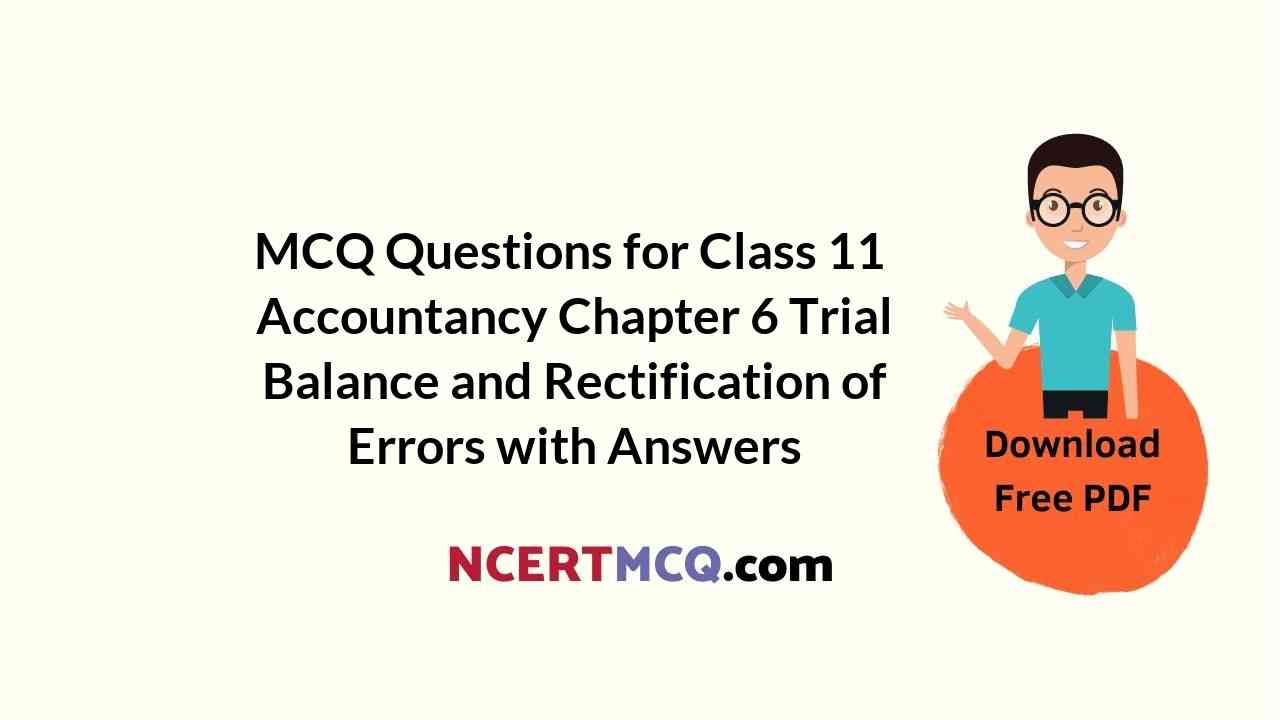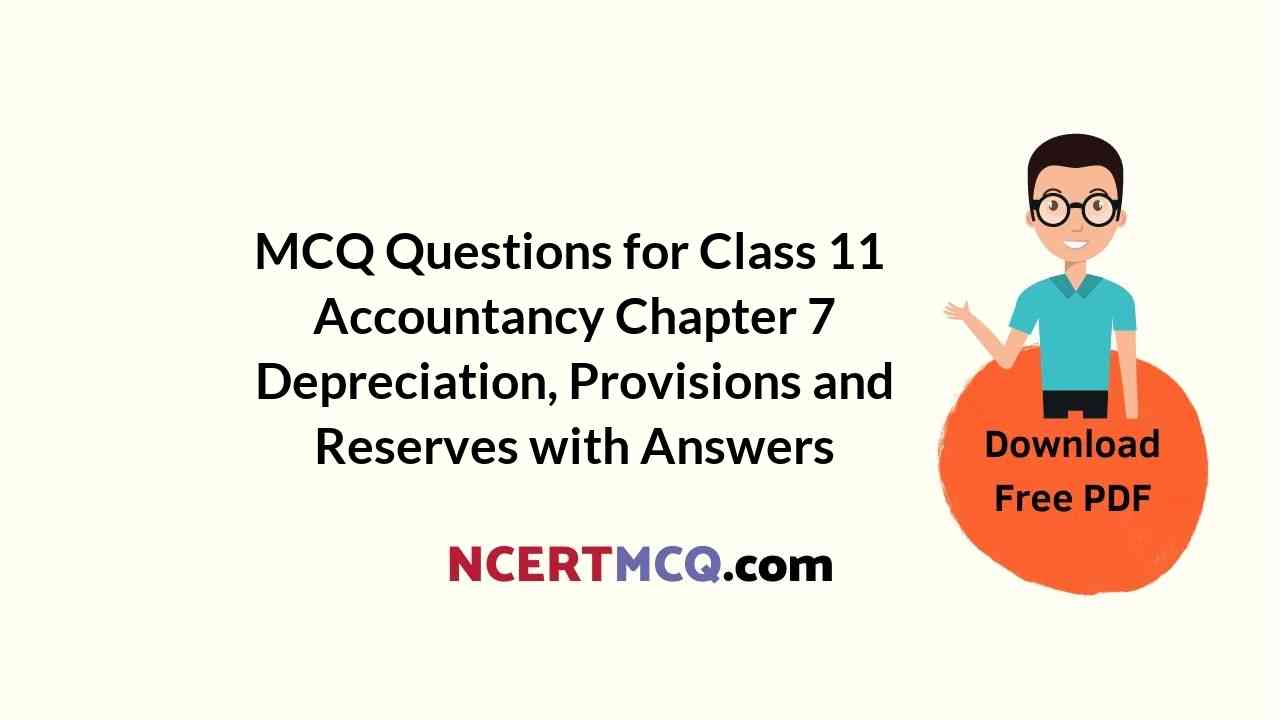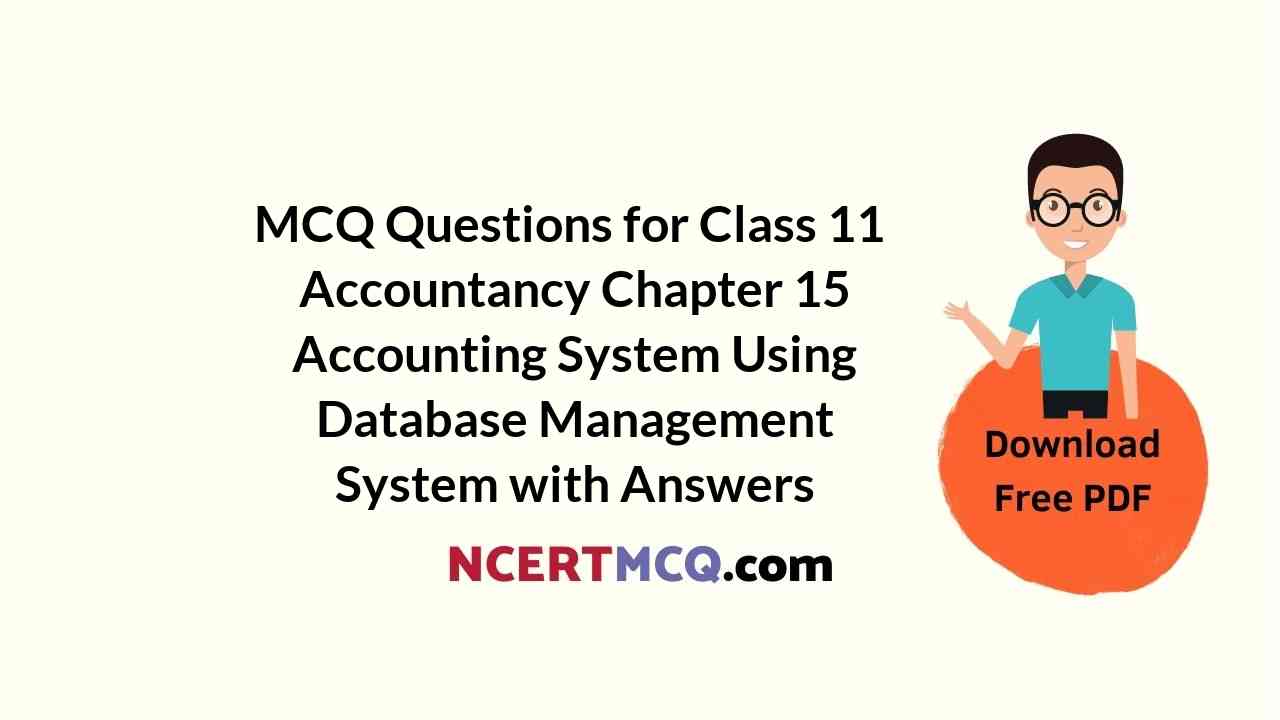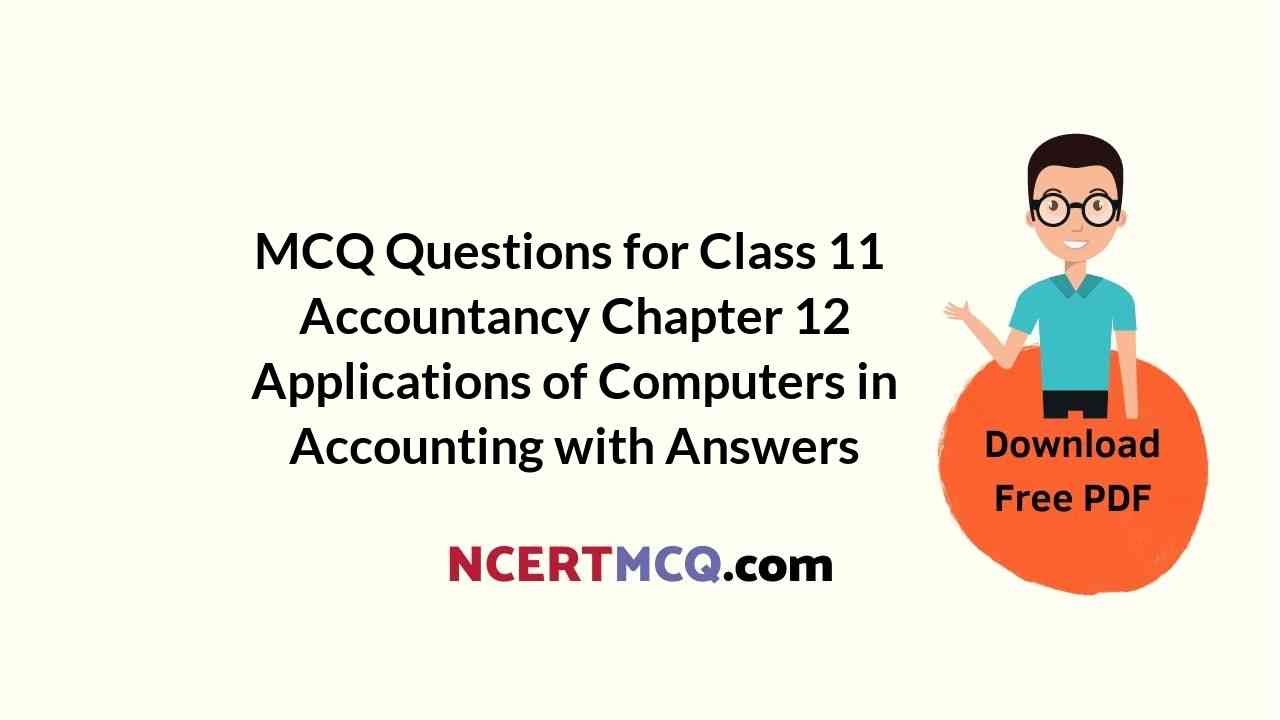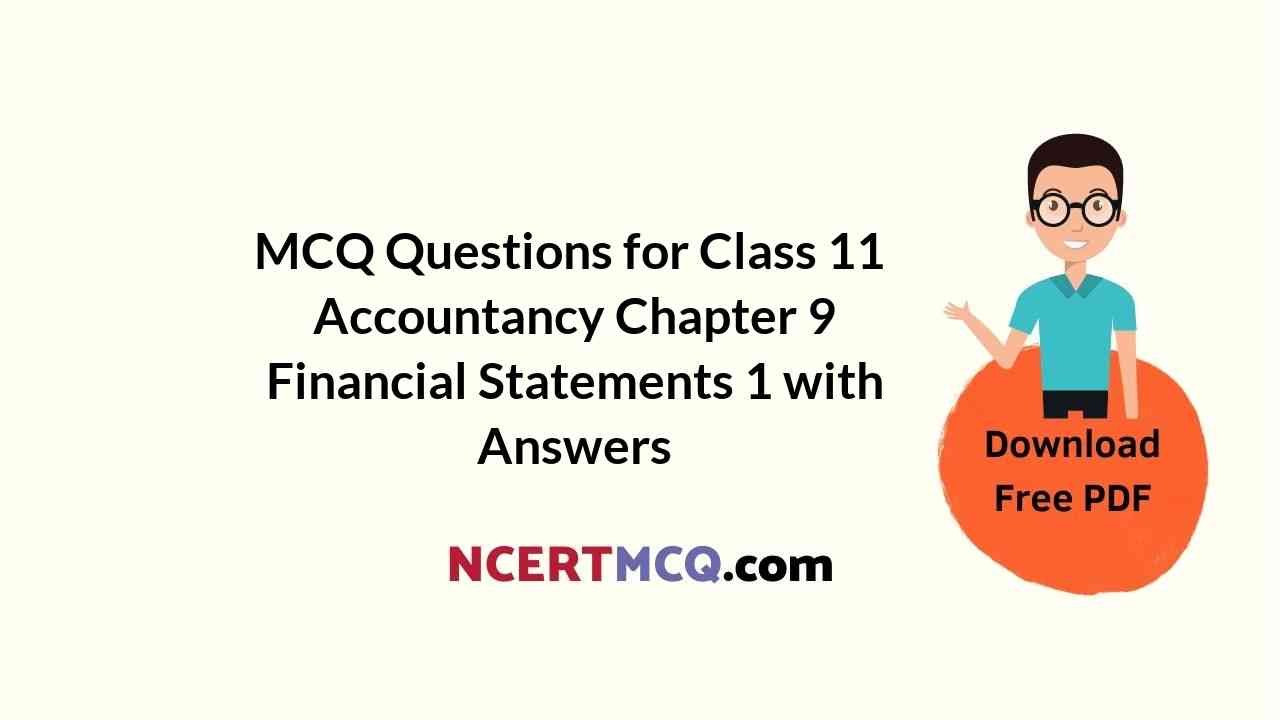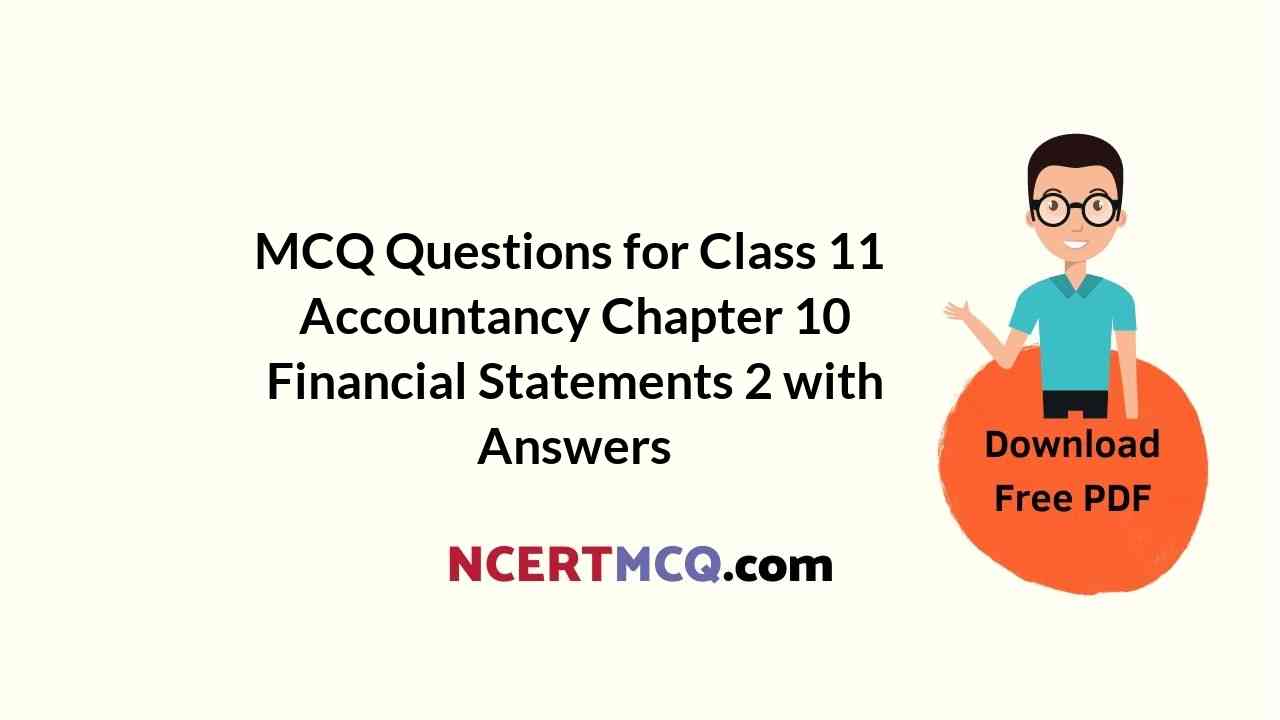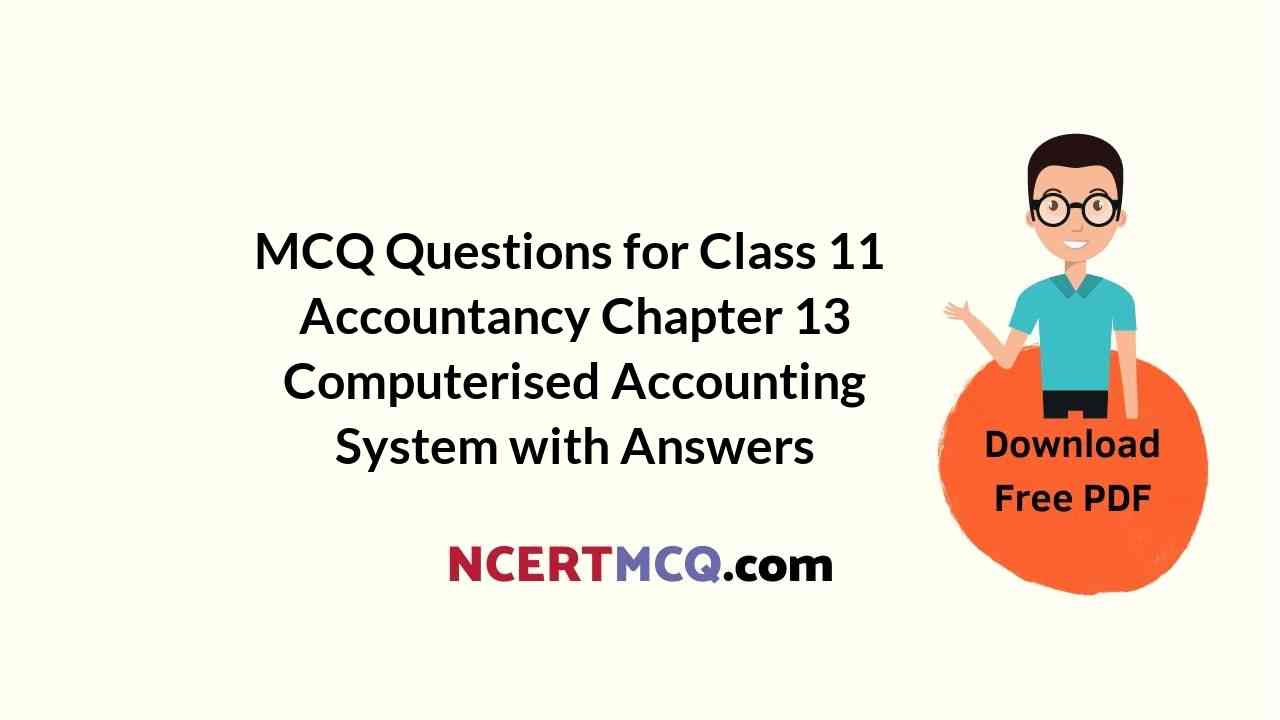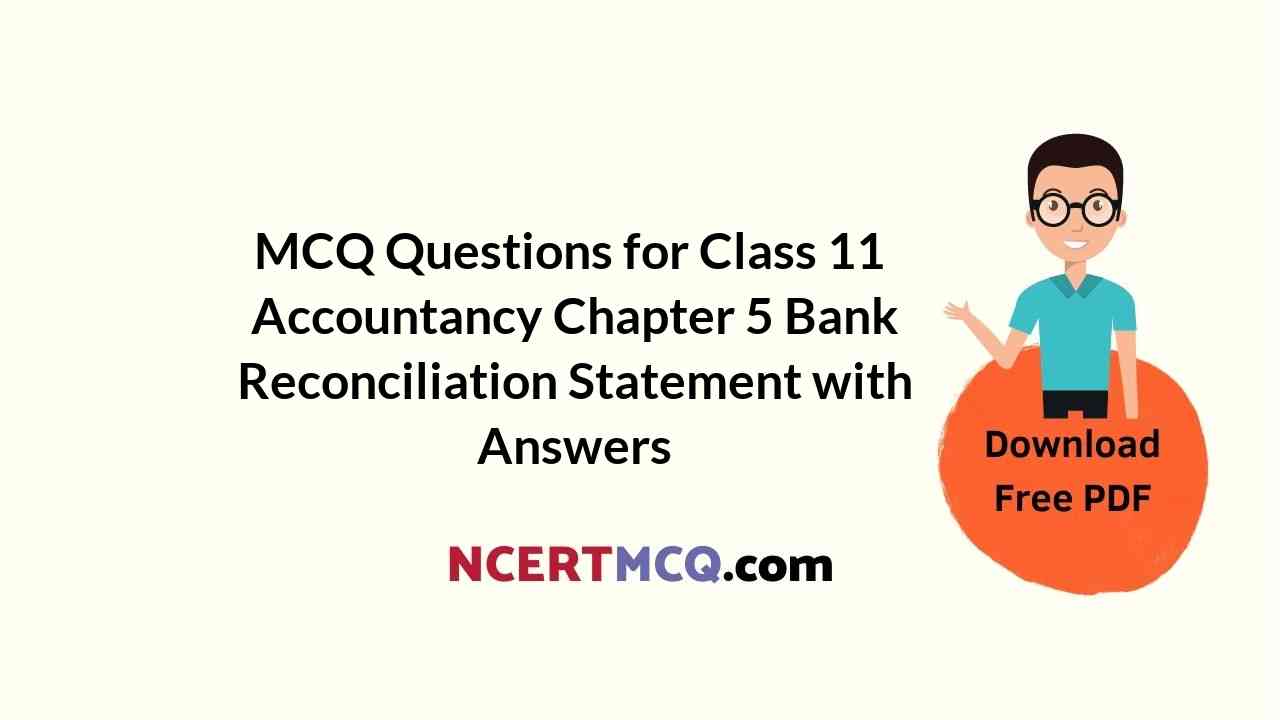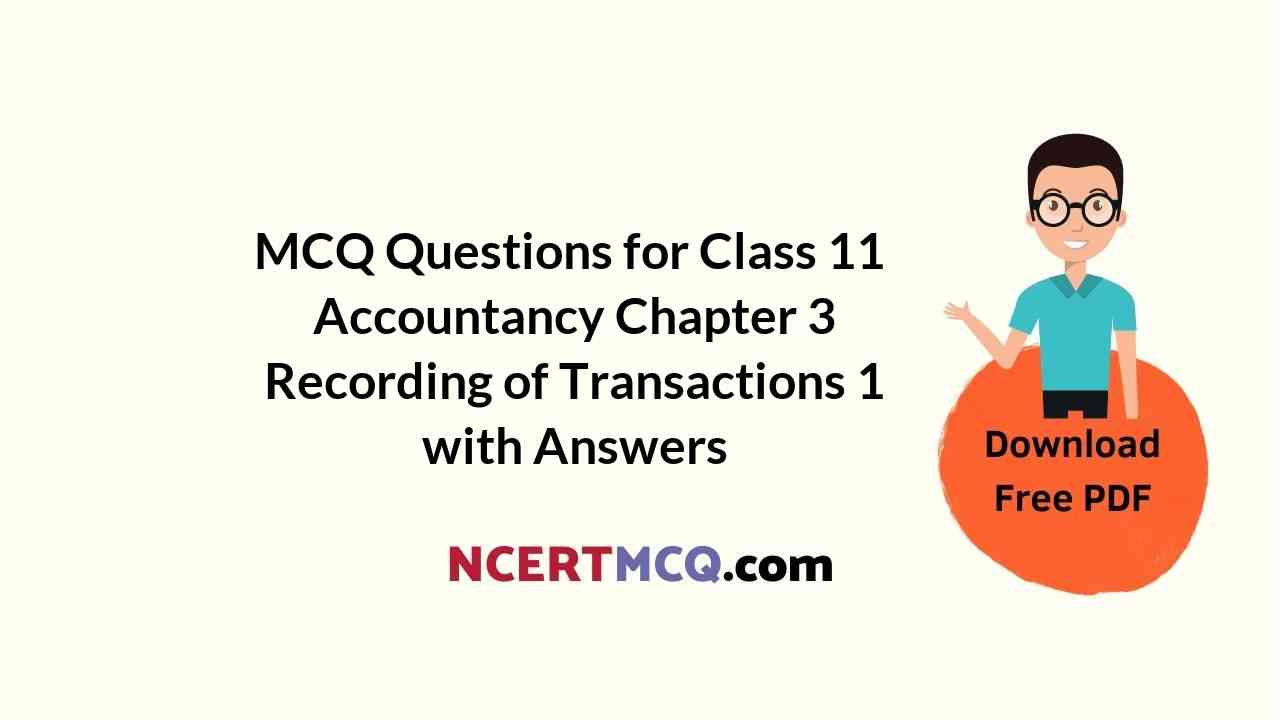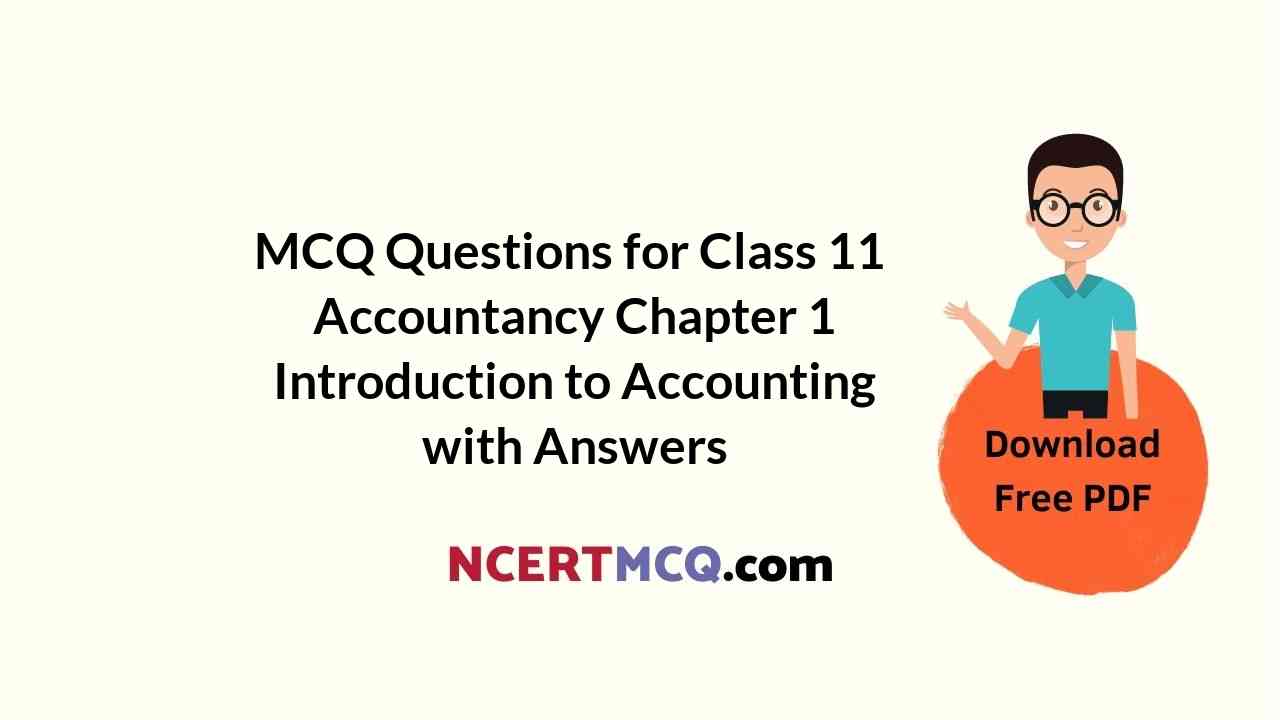Check the below NCERT MCQ Questions for Class 11 Accountancy Chapter 6 Trial Balance and Rectification of Errors with Answers Pdf free download. MCQ Questions for Class 11 Accountancy with Answers were prepared based on the latest exam pattern. We have provided Trial Balance and Rectification of Errors Class 11 Accountancy MCQs Questions with Answers to help students understand the concept very well.
Class 11 Accountancy Chapter 6 Trial Balance and Rectification of Errors MCQ With Answers
Accountancy Class 11 Chapter 6 MCQs On Trial Balance and Rectification of Errors
Trial Balance MCQ Class 11 Question 1.
What kind of accuracy is tested by Trial balance-
(a) Theoritical
(b) Practical
(c) Arithmetical
(d) None of these.
Answer
Answer: (c) Arithmetical
Trial Balance Class 11 MCQ Question 2.
How many methods are there for preparing Trial Balance –
(a) One
(b) Three
(c) Four
(d) None of these.
Answer
Answer: (c) Four
MCQ Questions For Class 11 Accountancy Chapter 6 Question 3.
Which of the following is prepared on the basis of Trial Balance –
(a) Journal
(b) Ledger
(c) Final Accounts
(d) None of these.
Answer
Answer: (c) Final Accounts
MCQ Of Trial Balance Class 11 Question 4.
Of the two sides of Trial balance does not tally, which Account is opened –
(a) Suspense Account
(b) Personal Account
(c) Real Account
(d) None of these.
Answer
Answer: (a) Suspense Account
Class 11 Accounts Chapter 6 MCQ Question 5.
The error which can be disclosed by Trial balance-
(a) Error of ommission
(b) Error of principal
(c) Compensatory error
(d) None of these.
Answer
Answer: (d) None of these.
Rectification Of Errors Class 11 MCQ Question 6.
Errors are rectified in this book-
(a) Ledger book
(b) Journal proper
(c) Trial balance
(d) None of these.
Answer
Answer: (b) Journal proper
Rectification Of Errors MCQ Question 7.
Errors Committed by omitting entries in the Journal book is called –
(a) Error of commission
(b) Error of principle
(c) Error of omission
(d) None of these.
Answer
Answer: (c) Error of omission
MCQ On Rectification Of Errors Class 11 Question 8.
If the trial balance does not tally after many efforts then following Account is opened –
(a) Purchase account
(b) Suspense account
(c) Sales account
(d) None of these.
Answer
Answer: (b) Suspense account
Question 9.
Errors committed due to lack of basis principle of Accounting are called –
(a) Compensating errors
(b) Error of principle
(c) Single sided error
(d) None of these.
Answer
Answer: (b) Error of principle
Fill in the Blanks:
1. Trial balance is merely a …………… not an Account.
Answer
Answer: Statement
2. ……………. are prepared on the basis of Trial balance.
Answer
Answer: Final Accounts
3. Trial balance is a test of …………….. Accuracy.
Answer
Answer: Arithmetical
4. Generally …………… does not form a part of Trial balance.
Answer
Answer: Closing stock
5. …………… stock is not included in Trial balance.
Answer
Answer: Closing stock
6. Errors committed while totaling, balancing of Accounts are called ……………
Answer
Answer: Arithmetical errors
7. ………….. errors are disclosed by Trial balance.
Answer
Answer: Arithmetical
8. If one error nullifies the effect of another error, such errors are called …………….
Answer
Answer: Compensating errors
9. Suspense Account is a ……………. Account.
Answer
Answer: Temporary
State True or False:
1. Closing stock appears outside the trial balance.
Answer
Answer: True
2. A trial balance is not a conclusive proof of accounting accuracy.
Answer
Answer: True
3. Trial balance is a test of only Arithmetical accuary.
Answer
Answer: True
4. Trial balance helps to check the principles of Double Entry System.
Answer
Answer: True
5. Trial balance is a part of ledger.
Answer
Answer: False
6. Suspense Account is a Permanent Account.
Answer
Answer: False
7. Single sided errors are generally rectified directly in the ledger accounts before closing the accounts.
Answer
Answer: True
8. Final accounts are not affected through rectification of errors.
Answer
Answer: False
9. Single sided errors are rectified through Suspense Account.
Answer
Answer: True
Match the following:
1.
| Column A | Column B |
| 1. Opening stock + purchase + Direct exp. – Closing stock | (a) Suspense A/c |
| 2. Difference of Trial balance is completely divisible by 9 | (b) Compensatory error |
| 3. Transactions completely ommitted in recording | (c) Wrong entry of amount |
| 4. Purchase A/c debited in case of furniture purchased | (d) Cost of goods sold |
| 5. One error neutralize other | (e) Error of ommission |
| 6. Difference of trial balance transferred to | (f) Error of principle. |
Answer
Answer:
| Column A | Column B |
| 1. Opening stock + purchase + Direct exp. – Closing stock | (d) Cost of goods sold |
| 2. Difference of Trial balance is completely divisible by 9 | (c) Wrong entry of amount |
| 3. Transactions completely ommitted in recording | (e) Error of ommission |
| 4. Purchase A/c debited in case of furniture purchased | (f) Error of principle. |
| 5. One error neutralize other | (b) Compensatory error |
| 6. Difference of trial balance transferred to | (a) Suspense A/c |
2.
| Column A | Column B |
| 1. Undercasting of purchase book | (a) Temporary account |
| 2. Machine purchased but purchase account debited | (b) Double sided error |
| 3. Suspense Account | (c) Error of principle |
| 4. Effect on two or more Accounts. | (d) Arithmetical error. |
Answer
Answer:
| Column A | Column B |
| 1. Undercasting of purchase book | (d) Arithmetical error. |
| 2. Machine purchased but purchase account debited | (c) Error of principle |
| 3. Suspense Account | (a) Temporary account |
| 4. Effect on two or more Accounts. | (b) Double sided error |
Answer in one word/sentence:
1. “A Trial balance is a statement of debit and Credit Balances Extracted from the ledger with a view to test the arithmetical accuracy of the books.” Who said this?
Answer
Answer: J.R. Batliboi
2. Mention any account which can show Debit or Credit Balance.
Answer
Answer: Rent
3. Debtor’s Accounts always show which balance?
Answer
Answer: Debit
4. What Balance is shown by Drawing Account?
Answer
Answer: Debit
5. How many methods are there for preparing trial balance?
Answer
Answer: Four methods
6. Is trial balance Ultimately proof of accuracy of accounts?
Answer
Answer: No
7. What is the nature of suspense A/c ?
Answer
Answer: Fluctuating
8. The entries passed in the Journal proper for rectifying entries are called.
Answer
Answer: Rectifying entries
9. The total of purchase book was written Rs. 200 instead of Rs. 2,000. This is an example of.
Answer
Answer: Error of casting
10. When two errors nullify each others effect, then such errors are called.
Answer
Answer: Compensating errors
11. When are rectifying entries passed?
Answer
Answer: Beginning of the year
We hope the given NCERT MCQ Questions for Class 11 Accountancy Chapter 6 Trial Balance and Rectification of Errors with Answers Pdf free download will help you. If you have any queries regarding CBSE Class 11 Accountancy Trial Balance and Rectification of Errors MCQs Multiple Choice Questions with Answers, drop a comment below and we will get back to you soon.
Class 11 Accountancy With Answers MCQ:
- Introduction to Accounting Class 11 MCQ
- Theory Base of Accounting Class 11 MCQ
- Recording of Transactions 1 Class 11 MCQ
- Recording of Transactions 2 Class 11 MCQ
- Bank Reconciliation Statement Class 11 MCQ
- Trial Balance and Rectification of Errors Class 11 MCQ
- Depreciation, Provisions and Reserves Class 11 MCQ
- Bills of Exchange Class 11 MCQ
- Financial Statements 1 Class 11 MCQ
- Financial Statements 2 Class 11 MCQ
- Accounts from Incomplete Records Class 11 MCQ
- Applications of Computers in Accounting Class 11 MCQ
- Computerised Accounting System Class 11 MCQ
- Structuring Database for Accounting Class 11 MCQ
- Accounting System Using Database Management System Class 11 MCQ
